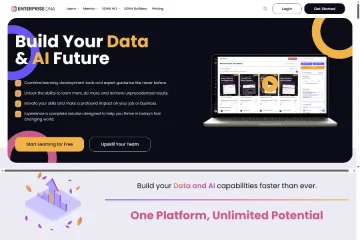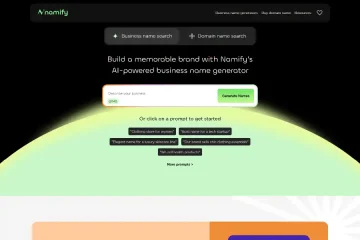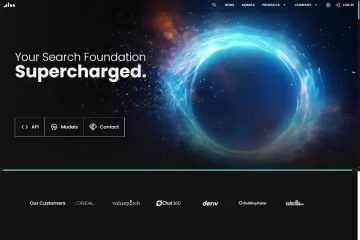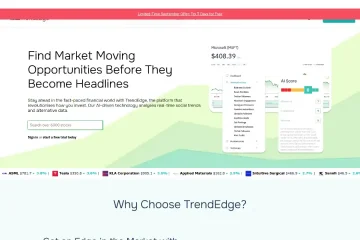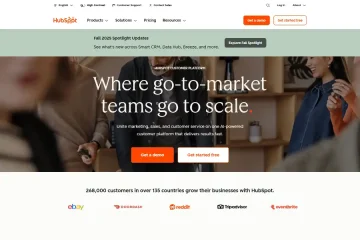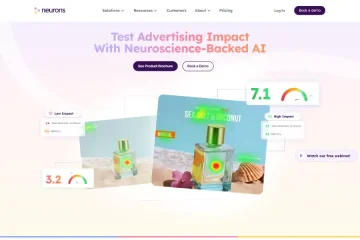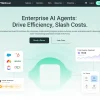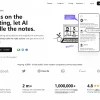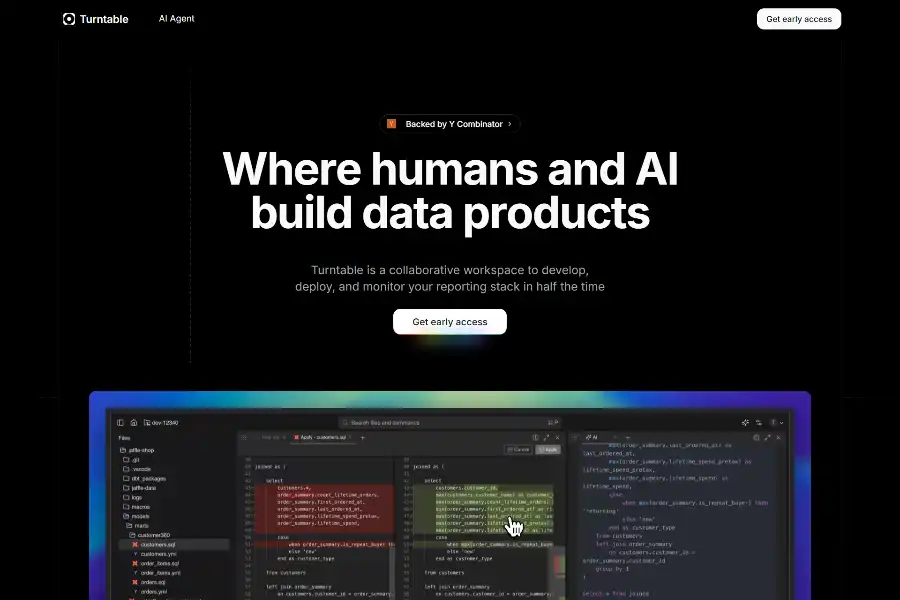
Revolutionize Analytics Workflows: 7 Powerful Ways Turntable.so Unleashes Human-AI Synergy for Data Teams
Introduction
Modern data teams are drowning in pipelines, dashboards, and ad-hoc requests. Most of their week is lost in boiler-plate SQL, governance fire-drills, and explaining why yesterday’s numbers are suddenly different. Turntable.so enters the scene as a collaborative workspace that promises to cut the time needed to build, deploy, and monitor the entire reporting stack by half. Backed by hundreds of leading data teams and armed with a native AI assistant, the platform blends a powerful data IDE with column-level lineage, virtual data branches, and end-to-end observability. This article dissects the technology, showcases real-world applications, and evaluates why Turntable is rapidly becoming the go-to operating system for analytics engineers and BI leaders alike.
Core Technology and Architecture
Turntable sits on a cloud-native micro-services architecture optimized for the modern data stack. The heart of the platform is a language-aware SQL parser that builds an Abstract Syntax Tree (AST) every time a user hits “Save”. From the AST, Turntable derives column-level lineage, impact analysis, and downstream dependency graphs in near-real time. A semantic layer built on top of the AST stores definitions of metrics, dimensions, and governance rules as code, enabling Git-style versioning and peer review.
The AI assistant is powered by a fine-tuned large language model (LLM) that has been continuously trained on millions of public dbt projects, Stack Overflow threads, and data-warehouse query logs. When a user asks, “Why did revenue drop 3% last week?” the assistant generates a hypotheses tree, surfaces the most likely root causes, and provides contextual SQL snippets that the analyst can accept, edit, or reject. All prompts and suggestions are persisted in a vector database so that the model learns the unique jargon, table-naming conventions, and KPI definitions of each organization.
Security and governance are baked in. Turntable connects via read-only service accounts, enforces OAuth 2.0 SSO, and encrypts all data in transit and at rest using AES-256. Sensitive PII columns can be masked or tokenized automatically using built-in classification rules powered by regex and transformer-based NER models.
Feature Deep-Dive
Multiplayer Code Editor
The web-based IDE supports SQL, Jinja-flavored dbt Core, and SQLMesh. Syntax highlighting, auto-completion, and real-time linting come standard. The editor supports multiplayer cursors—similar to Figma—so two analysts can co-author a model while an engineering manager leaves inline comments. Every keystroke triggers an incremental compile, and the compiled SQL is shown side-by-side for immediate validation.
Virtual Data Branches
Instead of copying entire tables into development schemas, Turntable creates lightweight, zero-copy virtual branches inside the warehouse. Analysts can preview downstream dashboards against their branch without duplicating storage or compute. Once ready, a single click merges the branch into production and atomically updates every BI asset.
Automated Catalog and Documentation
Metadata is harvested from the warehouse, BI tools, and even Slack conversations. The AI assistant then auto-generates human-readable descriptions, tags, and freshness SLAs. Each table and column has a living document that evolves with the code. Stakeholders can ask natural-language questions such as, “How is ARR calculated?” and receive a concise explanation plus a link to the source SQL.
End-to-End Observability
Turntable continuously diffs data across environments. If a nightly dbt job introduces a 2% row-count delta in the fact_orders table, the platform immediately flags the anomaly, notifies the owner via Slack, and provides a sample of the offending rows. Built-in orchestration supports cron, Airflow, and Dagster so teams can migrate without rebuilding DAGs.
Market Applications and Case Studies
High-Growth SaaS
A Series-D SaaS company with 400 employees replaced Looker’s LookML layer with Turntable. By shifting metric definitions into version-controlled SQL and enabling the AI assistant to generate 60% of new models, the team cut dashboard development time from weeks to days. Within three months, they retired 30 legacy LookML explores and reduced warehouse spend by 18% thanks to optimized SQL generated by the assistant.
E-commerce Marketplace
A two-sided marketplace handling 10 million monthly transactions integrated Turntable to monitor seller payout accuracy. Column-level lineage surfaced an upstream currency-conversion bug that had silently inflated payouts by 0.4%. The observability alerts prevented an estimated $1.2 million in over-payments during the holiday season.
Digital Health Startup
A HIPAA-compliant telehealth startup used Turntable’s built-in PII detection to auto-mask patient identifiers in analytics datasets. The compliance team saved four weeks of manual tagging, and the audit trail generated by Turntable passed a SOC 2 Type II review with zero exceptions.
User Sentiment and Community Feedback
On G2, Turntable holds a 4.8/5 rating across 142 reviews. Users repeatedly praise the “Figma-like multiplayer editing” and “AI that writes SQL better than our junior analysts.” Criticisms are minor: some want deeper integration with Databricks, while others request an on-prem variant. The company’s public Slack community of 3,400 members averages 42 messages per day, with active contributions from both staff and power users sharing custom macros and governance playbooks.
Pricing and ROI
Turntable offers a 14-day free trial that spins up a full sandbox connected to Snowflake, BigQuery, Redshift, or Databricks. Paid plans start at $50 per active seat per month and scale based on warehouse spend rather than row volume—aligning vendor cost with customer value. According to an internal survey of 87 customers, the median payback period is 2.3 months, driven by a 47% reduction in analyst hours spent on maintenance tasks.
Competitive Landscape
Compared to dbt Cloud, Turntable adds native BI integration, AI assistance, and column-level lineage out of the box. While dbt Cloud focuses on SQL transformation, Turntable extends the workflow to dashboards and alerts. Relative to Monte Carlo or Datafold, Turntable offers broader horizontal coverage—from modeling to observability—rather than point solutions. Analysts describe the platform as “dbt Cloud + Datafold + a junior analyst rolled into one.”
Future Roadmap
The product team has publicly shared a 2025 vision centered on three pillars:
- AI Copilot 2.0—predictive cost optimization that recommends warehouse clustering keys and auto-creates materialized views.
- Semantic Layer Marketplace—a GitHub-like hub where organizations share certified metric definitions.
- Enterprise Edge—an on-prem offering for regulated industries that still benefits from AI suggestions via a secure relay.
結論
Turntable.so is not just another SQL editor; it is an operating system for modern data teams who want to move from reactive firefighting to proactive insight generation. By merging a multiplayer IDE, AI-assisted development, and end-to-end observability into one coherent workspace, the platform delivers on its promise to build data products in half the time. Early adopters are already seeing dramatic reductions in cycle time, warehouse costs, and stakeholder escalations. If your team is ready to trade chaos for clarity, the 14-day trial is only one click away.
Access Turntable now: https://www.turntable.so

